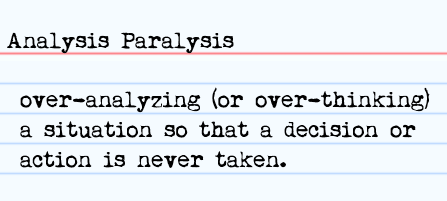|
Thanks for visiting - last year (2023) marked our 20th anniversary! In 2024 we're releasing our newest program - it helps people who are stuck in a constant state of fight-or-flight. You can read more about it by clicking the link at the bottom of this article. It's time for another installment of "Question and Answer Tuesdays!" Erica writes: "I've read a lot about meditating on the Internet and, to be honest, it's very confusing. There seem to be dozens of different types, and conflicting instructions on what to do and how to do it. What type of meditation should I focus on? Or, should I do more than one type of meditation? I really don't know where to start." When you Google "how to meditate," you'll find millions of results (seriously!). We constantly get questions on how the different types compare, and which one somebody should practice: Samatha (or concentration), Vipassana (or insight), mindfulness, zazen, metta (or loving-kindness), guided, transcendental, MBSR...the list goes on and on. There are a lot of methods. There's a lot of advice. And, as you pointed out, much of it conflicts! It's easy to suffer information overload, which - according to Wikipedia - leads to a reduction in decision quality and a likelihood of no action being taken. That's a bit disheartening: there's so much information available that it overwhelms a lot of people and, as a result, they won't even attempt to meditate. It doesn't have to be complicated, though. The question I ask people is "Why do you want to meditate?" These are the most popular answers:
The one thing these answers have in common is a need to better understand the mind. Once you begin to understand the mind, how it works, and the problems it creates in your life, then you can focus on the method. If you don't have this understanding, however, you'll probably view meditating as a chore or an item to check off your "to-do list." That means you will bounce around from one type of meditation to another, never really focusing, and abandoning your efforts after a short period of time. In order to understand the mind, you need to become aware of the filters and constructs it places on top of reality. Put simply, we don't see things as they are - we see things as our minds present them. This brings us full circle to the original question: "What type of meditation do I focus on?" My answer is simple: when you strip away all the extraneous stuff, there is only ONE type. This one type involves strengthening awareness (also known as "cultivating mindfulness"), and learning to notice your mind and its activity (also known as "mental noise") without getting caught up in it. One more time: strengthening awareness and learning to notice your mind and its activity without getting caught up in it. What do we call this one type? Meditating! No fancy names, no extra labels, no added complexity. Here are the steps:
Don't get frustrated if it takes you a while to notice your attention has wandered from your anchor - sometimes you catch it immediately, sometimes it takes longer. It doesn't matter - simply return it to your anchor when you do notice. Notice and return, over and over and over again. As you develop more experience, attempt to actively refrain from judging and labeling thoughts, emotions, or anything else that arises. Drop the urge to categorize "this" as good or positive and "that" as bad or negative. Thoughts are just thoughts. Emotions are just emotions. They hold no special power over you unless you give it to them. They will go the same as they came, provided you don't cling to them and make them "yours." And, provided you don't try to chase after what gives you pleasant feelings or run away from what gives you unpleasant feelings. If you observe instead of interfering, you will see everything progress through a natural cycle of arising (coming), existing for a time, and passing (going). Don't get mad if a sound interrupts your practice. If something itches and you have to scratch it, scratch it. If you have to shift your position, shift your position. At the same time, if you can notice discomfort and the desire to alleviate it (scratching, shifting) and let it pass without acting on it, then do so. After all, discomfort is just discomfort. And, thoughts about discomfort are just thoughts about discomfort. And, urges to do something are just urges to do something. Simply return your attention to your anchor once you notice it has wandered and you're caught up in thoughts. Notice and return, over and over and over again. What does this do for you? If you develop a consistent practice, it gets easier to observe thoughts, emotions, and urges when you aren't practicing: this is referred to as being mindful. As you go through your day, you can see this "mental noise" as it arises and realize you don't have to get caught up in it or react to every single thing that happens around (or inside) you. Instead, you learn to let it all be as it is, independent of you and your attention. This is commonly referred to as "letting thoughts and emotions go," or letting them pass. It means you are choosing not to follow them down a path that culminates in conditioned behavior and habitual actions and reactions - a path that leads to struggles with stress, anxiety, self-doubt, et cetera. That's it. Forget all the different types, forget the labels, forget the complexity. Just start. Why not set a timer for 5 minutes right now? ___Are you stuck in a constant state of fight-or-flight? Are you struggling with all the problems it causes?
Are you even aware of all the problems it causes? If this sounds like you, read more about our newest program here. Comments are closed.
|
